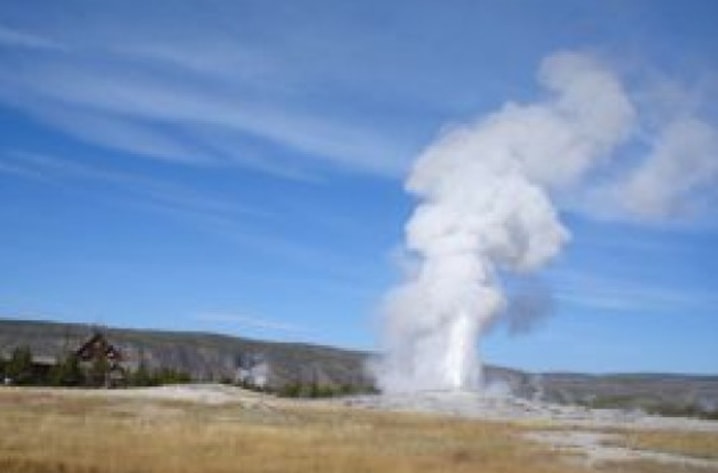CHEYENNE, Wyo. — Geyser experts plan to spend three days in Yellowstone next week pooling their knowledge about the Old Faithful area’s geology to help guide future decisions about construction in the park’s most popular destination.
Old Faithful is by far the most famous geyser, but only one of at least 150 in the Upper Geyser Basin, the world’s most active geyser basin.
Geysers are sensitive to digging and other ground interference, human-caused or natural.
Yet scientists still don’t know as much as they’d like to about the Upper Geyser Basin’s underground fissures and chambers soaked by water superheated by the massive Yellowstone volcano.
Throw in the massive numbers of people who visit Yellowstone each year — more than 3 million, an estimated 90 per cent of who visit Old Faithful — and park managers face a challenge in meeting their needs while protecting the park’s thermal features, park geologist Hank Heasler said Wednesday.
“What is the sensitivity of the hydrothermal system at Old Faithful with respect to the development that currently exists, has existed in the past, and may exist in the future?” Heasler said.
“The understanding of the hydrothermal system is in some ways is very complete, but in other ways is in its infancy.”
No big projects are in the works near Old Faithful right now except a dormitory building for park employees.
The start of that project is still at least a year off, park spokesman Dan Hottle said.
The scientists plan to meet Monday through Wednesday at the Old Faithful Snow Lodge.
They will present to one another and park managers and the highly technical sessions will be open to any curious tourists who want to listen in.
The half-dozen scientist participants will include Jake Lowenstern, scientist in charge at the Yellowstone Volcano Observatory, and Duncan Foley, chairman of the Geology Department at Pacific Lutheran University in Tacoma, Wash.
The scientists plan to release a summary report in September that will serve as a reference guide for future infrastructure projects.
The report will focus on the top 10 feet or so of the Upper Geyser Basin’s geology.
“That’s where your water lines and sewer lines go. That’s where your building foundations go,” Heasler said.
Heasler said he’ll be interested in seeing how much the scientists know about how water flows beneath the geyser basin.
Unlike other scientific review panels convened in Yellowstone, such as panels that tackled the tough problem of Yellowstone Lake’s invasive lake trout population, the Upper Geyser Basin panel won’t make recommendations.
“It’s time to take another look. It’s been awhile,” Hottle said.
In fact, Heasler said he couldn’t recall the last time a scientific panel had been convened just to look at the basin’s geology.
“Are there certain areas that are more sensitive than others, or should there be additional studies?” Heasler said. “This is a wide-open questioning of what is known about the system. And an important component of that is what is not known.”
